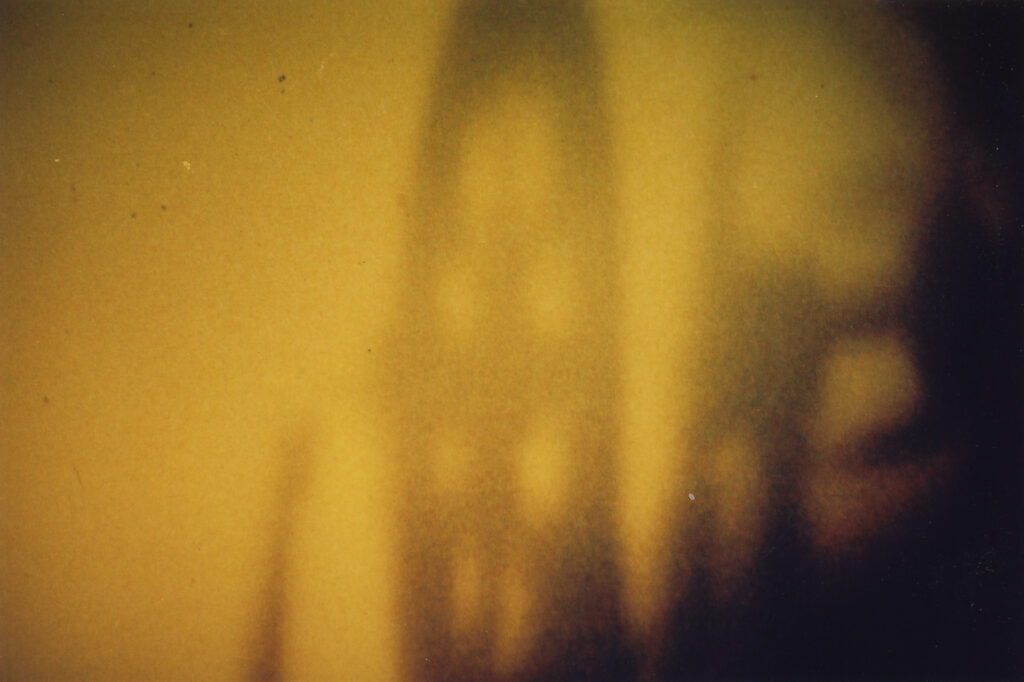Super8mm & 16mm – Great Small Gauge 2020

Programme curated by Karl Wratschko and Mariann Lewinsky
Only the second year, and already the title of the section does not fit any more… Screenings were planned in Super8mm, 16mm, a 16mm blow-ups from Super8, a 35mm blow-up from Super8mm and even projections ‘without gauge’, which means with all possible gauges – up to about 80mm. Some of these events were eventually postponed to next year’s edition, but what remains is still an eclectic offering. The works of the three major visual artists we present are often described as experimental. A tricky classification. What is an experiment? Everything that does not comply to the rules of commercial cinema? These works are, simply and strictly, films. That is especially true for Peter Hutton, who consistently practised a form of essential cinema: capturing the world via the cinematic eye and offering the world images of an incredible clearness and purity. The Super8mm format was far more than a popular amateur format. It allowed filmmakers to work outside the heavy structures of commercial fi lm production (features such as Io sono un autarchico by Nanni Moretti were shot on this format). The films by Barbara Meter, all shot on Super8mm, flaunt wonderful colours and great beauty both in their original format and transfigured, in the blow-up. The works of this artist are characterised by her gaze on the elementary things of the world around us, easily overlooked in our daily life. A different case is Henri Plaat, who like Meter is from Holland and is much better known as a painter than a filmmaker. Plaat used two opposing modes of cinematography, on one hand shooting long travelogues in distant places, on the other creating collage-films at home in his workshop. We have focused on his short, unassuming, masterful and often hilarious collages. The screening of Images of Asian Music by Hutton last year at the festival left us with just one wish: to see the film again and to learn more about the director. So three more films from Hutton’s oeuvre are scheduled this year. In interviews, Hutton often mentioned the deep influence of early cinema on his filmmaking. When screening his work after a programme of Lumière views from 1899 the two film worlds connected magically and imparted a simple lesson: it is all about the art of seeing!
Karl Wratschko and Mariann Lewinsky
Program
Tuesday 25/08/2020
12:00
Teatro Comunale di Bologna
FESTIVAL OPENING IN 4 GAUGES
FESTIVAL OPENING IN 4 GAUGES
Cecilia Cenciarelli, Mariann Lewinsky, Ehsan Khoshbakht, Gian Luca Farinelli
Daniele Furlati
Thursday 27/08/2020
14:30
Teatro Comunale di Bologna
INDOCHINE OCCUPIED / IMAGES OF ASIAN MUSIC
INDOCHINE OCCUPIED / IMAGES OF ASIAN MUSIC
Mariann Lewinsky and Karl Wratschko
Thursday 27/08/2020
16:00
Teatro Comunale di Bologna
16mm & Recovered: Plaat & Méliès
16mm & Recovered: Plaat & Méliès
Hervé Pichard (Cinémathèque française)
Drum accompaniment by Frank Bockius
Friday 28/08/2020
11:00
Teatro Comunale di Bologna
STUDY OF A RIVER / TAM NA HORÁCH
STUDY OF A RIVER / TAM NA HORÁCH
Harp accompaniment by Eduardo Raon
Friday 28/08/2020
14:30
Teatro Comunale di Bologna
16mm: Henri Plaat & Peter Hutton


